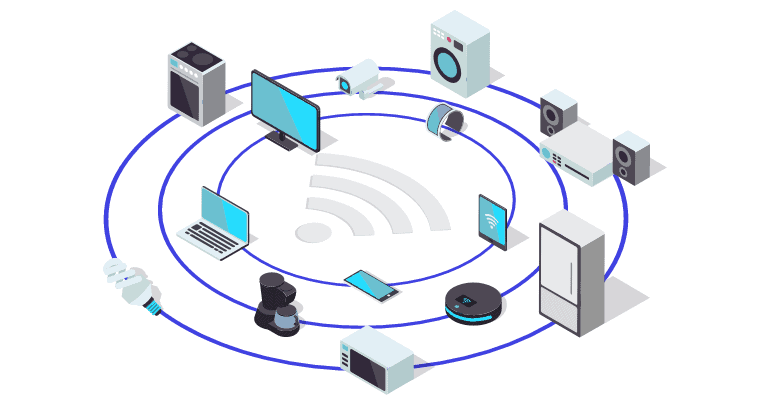Smart home technology has been rapidly gaining popularity since the early 2010s, and for good reason. Smart home products are convenient, save you money, and make your home safer and more secure. But exactly how widespread is smart home technology?
According to research, approximately 32% of U.S. households entered the new decade (2020s) with smart home technology. From the same study, it is estimated that its market scope will expand to 57% by the mid-2020s. 1
This report examines the types of smart home technology consumers currently own, their satisfaction with that technology, and their plans to purchase new or upgraded “smart technology” over the next 12 months. Which devices are most preferred and are people planning to invest more money in Internet of Things (IoT) devices?
Our research shows that there is strong demand for these products, and the proportion is higher than previously predicted. Here are the key findings from our survey, based on responses from 605 self-proclaimed consumer electronics purchasing decision makers.
The most popular smart home devices today are smart TVs, smart TV plug-ins, and smart speakers. Sixty-four percent of respondents said they plan to purchase a new type of smart home technology within the next year. This equates to more than 80 million households in the United States, significantly exceeding industry expectations. Most households with no interest in owning or using smart home technology said it was unnecessary or not relevant, although some cited high costs and privacy implications.
Most Owned Smart Home Devices Today
Smart TVs and smart TV plugins like Chromecast and Amazon Fire TV Stick are the most commonly owned smart home devices today. This is consistent with his 2020 research from eMarketer that found video entertainment is the most common category of smart home technology, surpassing home monitoring and security among other types of devices.


How satisfied are consumers with smart home technology?
Given their popularity, it's no surprise that most people are satisfied with smart TVs, TV plug-ins, and smart speakers. Consumers are generally satisfied with their smart technology purchases.
Our research shows that consumers are the most satisfied with their smart TV and TV plug-in purchases, with 42% saying they are satisfied and 49% saying they are very satisfied. It becomes 91%. This is followed by smart security cameras and video doorbells, with his satisfaction rating at 89%.
Meanwhile, the types of smart home products that buyers seem to be least satisfied with are smart outdoor gadgets like robotic lawn mowers, pool cleaners, and smart sprinklers. Ten percent of respondents said they were not satisfied or very dissatisfied.


Will consumers recommend smart home technology to their friends?
When someone is satisfied with a product, they recommend it to a friend…right? We find that recommendation rates are generally lower than satisfaction rates.


Why consumers say they're not interested in buying smart home technology
Not everyone wants to buy and use smart home technology. Many consider it unnecessary, irrelevant, and too expensive. Some have concerns about privacy given the insecurity of many IoT devices and the commonality of security breaches.


Who buys smart home technology?
We were also interested in who is purchasing the most smart home technology based on age, gender, household income, region, and device type.
Year
Millennials and Gen Xers are the most likely to have smart home technology. We believe this is because this generation has both purchasing power and curiosity about the latest technology.


sex
While men and women are equally likely to own smart home technology, one discrepancy we found was smart home hubs and controllers, where men were twice as likely to own them.


The future of smart home
As mentioned earlier, about two-thirds of people want to buy more smart home technology in the next six months or next year than they already own. We looked at what specific types of technology they were interested in purchasing.
What to buy in the next 6 months
Unsurprisingly given its overall popularity among consumers, most respondents said they would like to purchase a smart TV and TV plug-in within the next year. In fact, 52% of respondents said they had a smart TV on their shopping list.
Following smart TVs is another entry-level category of smart home technology: smart lights. Smart lights are classified as Wi-Fi-connected smart light bulbs or switches, making smart home technology easy and affordable for consumers.


What to buy in the next 12 months
Non-urgent purchases included smart lighting, security cameras, video doorbells, security systems, and smart locks. In general, many people plan to purchase IoT devices within the next six months rather than within a year, which means there is a sense of crisis, especially for entertainment-related products such as smart TVs. We hypothesized that smart security products would be more urgent given their impact on home invasions, but the data clearly shows that streaming is a more pressing issue. is.


summary
One truth from our research is that people frequently use and enjoy smart home technology. It's no secret that these devices are making our lives more convenient, safe, and energy efficient, and the industry continues to grow each year. If you want to jump on the bandwagon, read our home automation guide that explains how to build a smart home from start to finish.
https://www.statista.com/outlook/279/109/smart-home/united-states#market-globalRevenue
Source link

